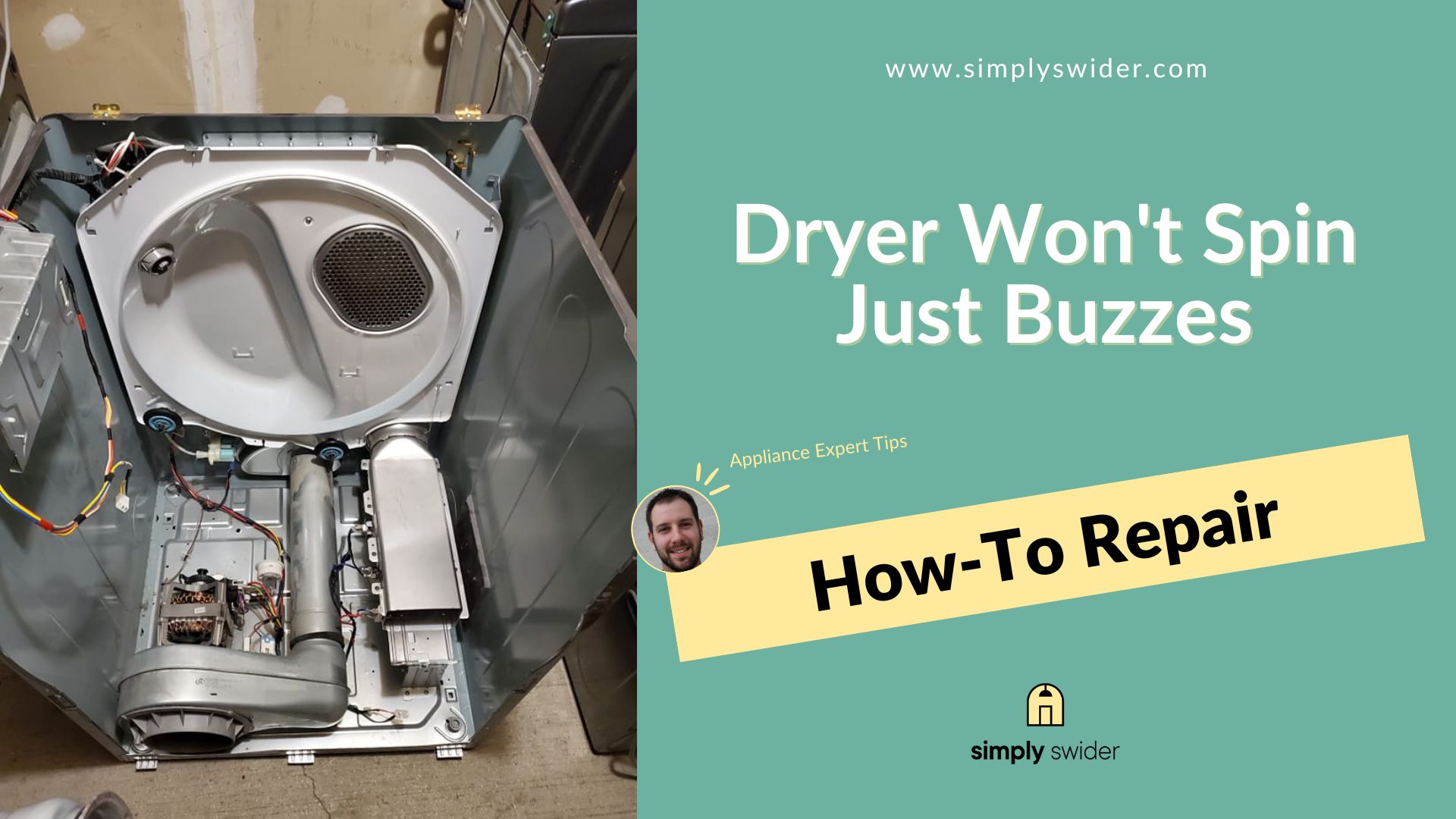Unfortunately:
Although you expected your dryer to spin, all you got was a puny buzzing sound when you pushed start. And you’re most likely wondering what’s wrong.
Thankfully:
I’ve encountered this problem several times while repairing dryers. And troubleshooting it is not as complex as you think.
I’ve also enlisted the help of Jake Goodman, an experienced appliance technician from Colorado, to make things even simpler.
Let’s get this show on the road!
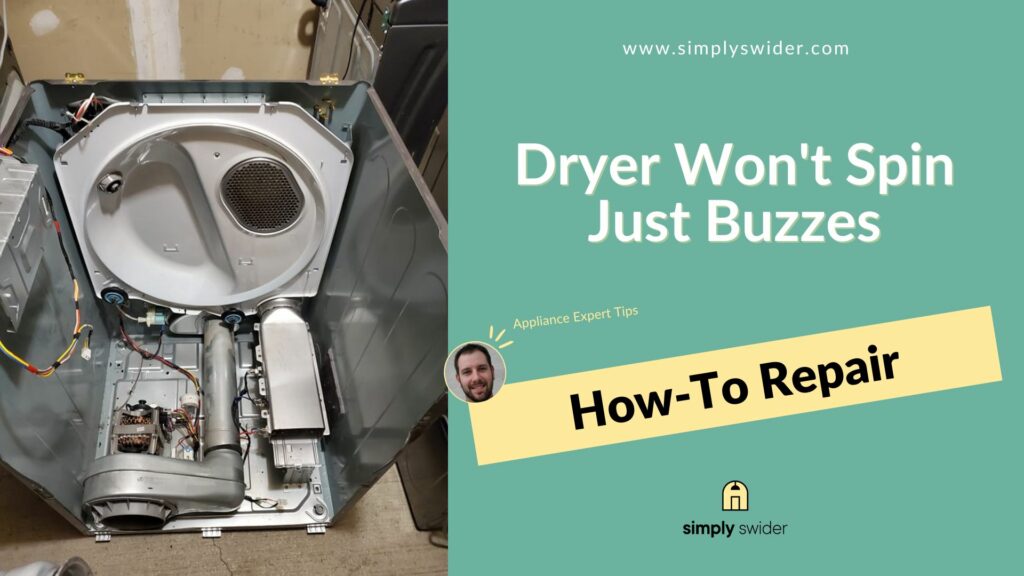
Table of Contents
Why Your Dryer Won’t Spin Just Buzzes
| COMMONLY AFFECTED PARTS | ESTIMATED COST |
|---|---|
| Dryer belt | $5 – $20 |
| Idler pulley | $5 – $35 |
| Drum Roller | $5 – $25 |
| Drum glides | $7 – $35 |
| Drum Support Bearing | $6 – $10 |
| Dryer Motor | $65 – $150 |
There are a few dryer components to examine for faults when your dryer doesn’t spin, and you detect a buzzing sound. These include the drive belt, idler pulley, drum rollers, drum glides, drum support bearing, and dryer motor. Ensure these parts are in good condition and replace them where there are malfunctions.
Going forward:
I will dig into each of these potential faults, outlining how to identify and troubleshoot them. But first, you must wear protective gear and ensure the dryer is unplugged.
Ready?
Common Causes and Troubleshooting Steps for a Dryer that Won’t Spin but Just Buzzes
1. Misaligned or Broken Drive Belt

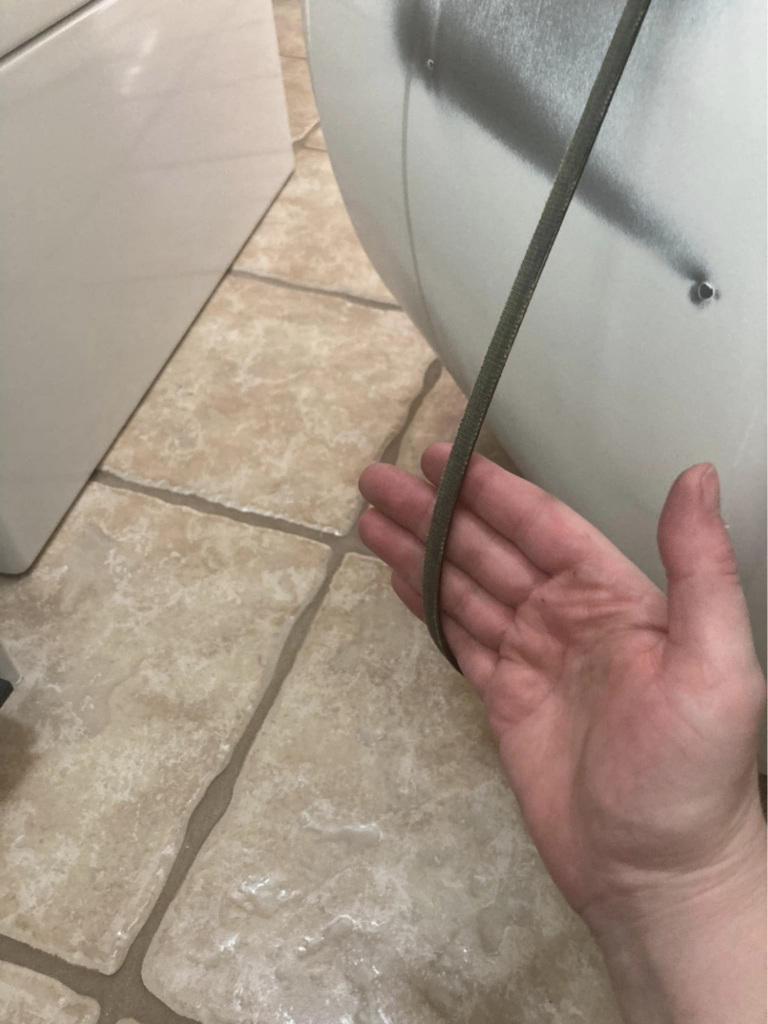
| Part | Dryer belt |
| Location | It is located around the drum and is connected to the motor pulley and the idler pulley. |
| Ease of troubleshooting | Easy |
| Cost | $5 – $20 |
| Repairable | No |
Here’s the thing:
If your dryer does not spin, the drive belt that rotates the drum has likely slipped out of position, snapped, or worn out. When this happens, you may also hear a buzzing sound.
Now:
This Reddit user complained that their Frigidaire dryer wouldn’t spin but just buzzed. In response, another user asserted that the drum belt needed to be replaced.
From a professional’s standpoint:
I believe the dryer drive belt is the first component to examine when dealing with this problem. And to determine whether it is the culprit, you should try to spin the drum manually.
If the drum turns freely, the belt is most likely damaged.
Next:
Troubleshooting the faulty dryer belt is pretty straightforward. The trick is to detach the access panel, locate the belt, and replace it if damaged.
2. Broken Idler Pulley
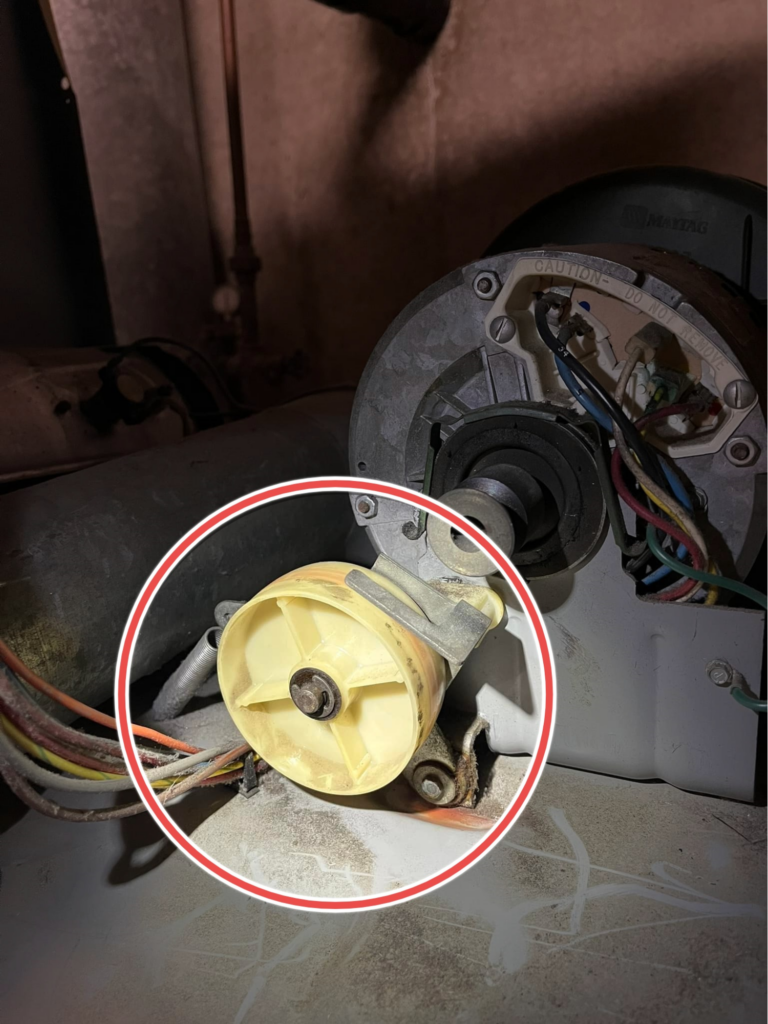
| Part | Idler pulley |
| Location | It is positioned near the motor assembly close to the belt path. |
| Ease of troubleshooting | Easy |
| Cost | $5 – $35 |
| Repairable | No |
Now:
If the belt is fine, the idler pulley is the next likely suspect. This component places the tension required to spin the dryer drum on the drive belt.
So:
An indicator that the idler pulley is failing would be a buzzing, squealing, or humming sound. This sound draws attention to worn idler pulley bearings.
Here’s an example:
This Reddit user heard one such noise coming from his Whirlpool Cabrio WED8000DW4 and replaced the idler pulley. Jake believes that was the right call as a new idler pulley would have the necessary tension to spin the dryer quietly.
So, how exactly do you resolve this issue?
Detach the access panels, locate the idler pulley, and inspect it for visible damage. If broken, unthread the drive belt from the path and replace the defective pulley with a new one.
Note:
If you use a Whirlpool dryer, you can purchase authentic replacement parts from the Whirlpool online parts store. You can also get free replacements if the one-year warranty covers your device.
3. Worn Drum Rollers
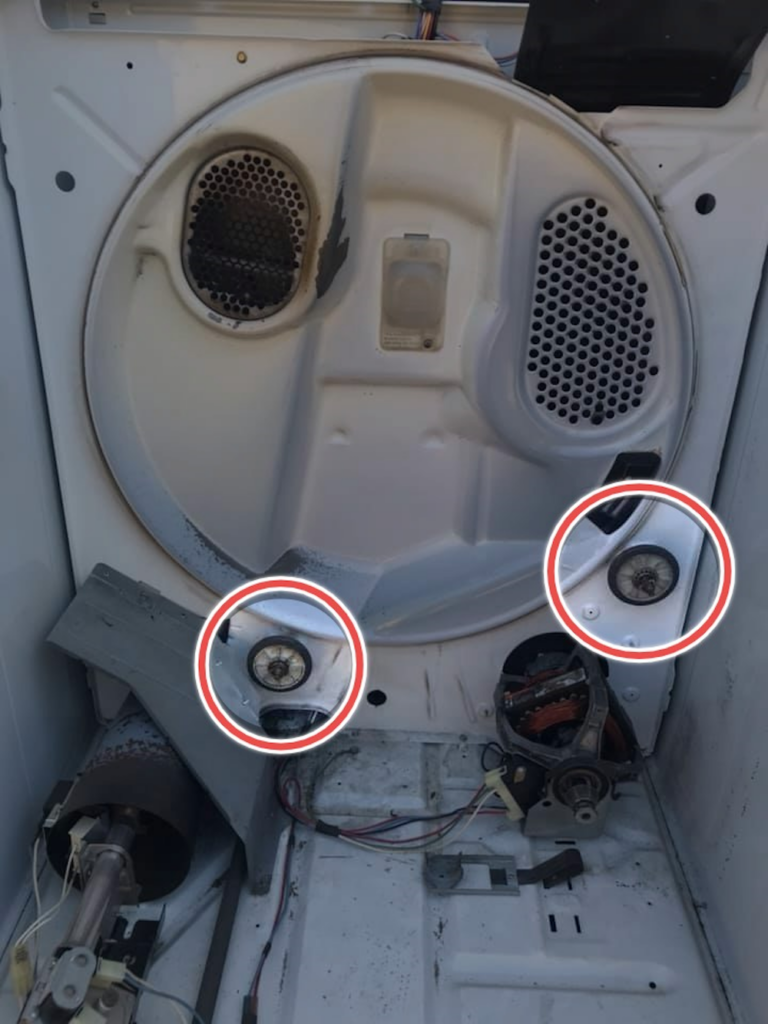
| Part | Drum rollers |
| Location | They are located at the back of the drum or the front bulkhead. |
| Ease of troubleshooting | Moderate |
| Cost | $5 – $25 |
| Repairable | No |
Understand this:
Drum rollers are attached to the rear of the dryer drum to facilitate its seamless rotation. If your dryer struggles with spinning while emitting a buzzing or squeaking sound, you should consider checking these rollers for faults.
You see:
Our Facebook group member made a post concerning his 7-year-old Samsung DV50K8600 dryer that wouldn’t spin. He complained that it only produced a whiny buzzing sound when set on a drying cycle instead of spinning clothes dry.
In response:
Although I feared a more advanced issue because of the dryer age, I suggested a preliminary check on the drum rollers and their axles. Thankfully, that was the exact spot that needed attention.
Now:
Troubleshooting this fault is not complicated. Simply detach the necessary access panels, find the drum rollers attached to their mounts, and examine them for damage.
Jake points out:
“Most dryers come with two or more rollers, so if one is damaged, it would be best to replace the lot.”
4. Damaged Drum Glides
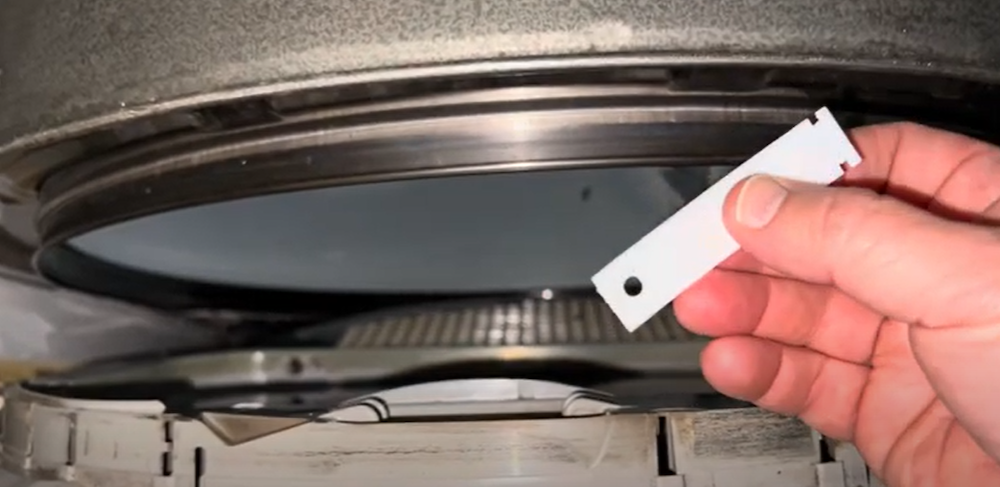

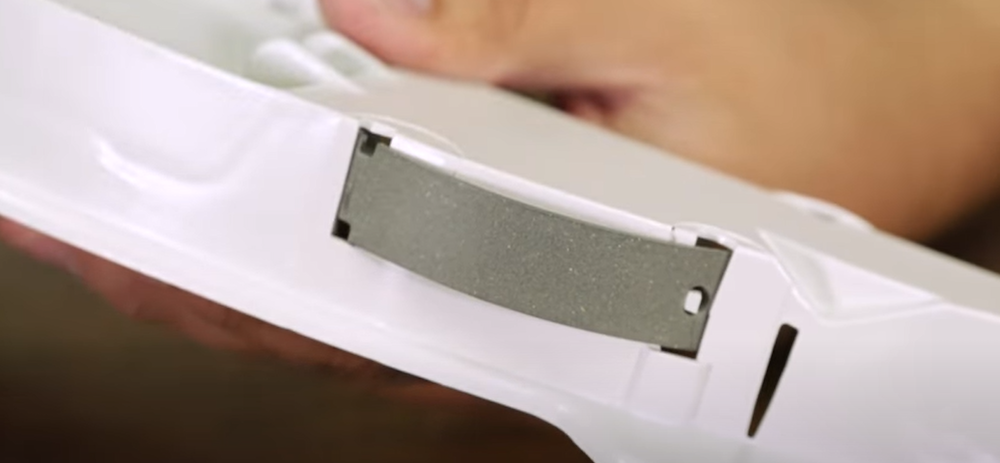
| Part | Drum glides |
| Location | They are found inside the dryer’s front panel at the drum’s front edge. |
| Ease of troubleshooting | Easy |
| Cost | $7 – $35 |
| Repairable | No |
Listen:
Drum glides brace the front part of the dryer drum and help it rotate smoothly and quietly. So naturally, your dryer will have trouble spinning seamlessly when the glides wear out.
You see:
This Reddit user has first-hand experience in this department. His 8-year-old Maytag Neptune MDG5500AWW dryer refused to spin and only let out a whirring noise for about 5 seconds before quitting.
Eventually:
At the end of his hunt for answers on Reddit, he figured that the problem was with the drum glides.
The thing is, when the glides wear out, the motor takes on the pressure they were designed to relieve, affecting the dryer’s spinning capability.
Jack mentions:
“Like the drum rollers, these drum glides come in a set and should all be replaced if one is lacking.”
So, to troubleshoot this fault, unscrew the front panel, find the drum glides, check for visible signs of wear, and replace them if damaged.
5. Worn Drum Support Bearings
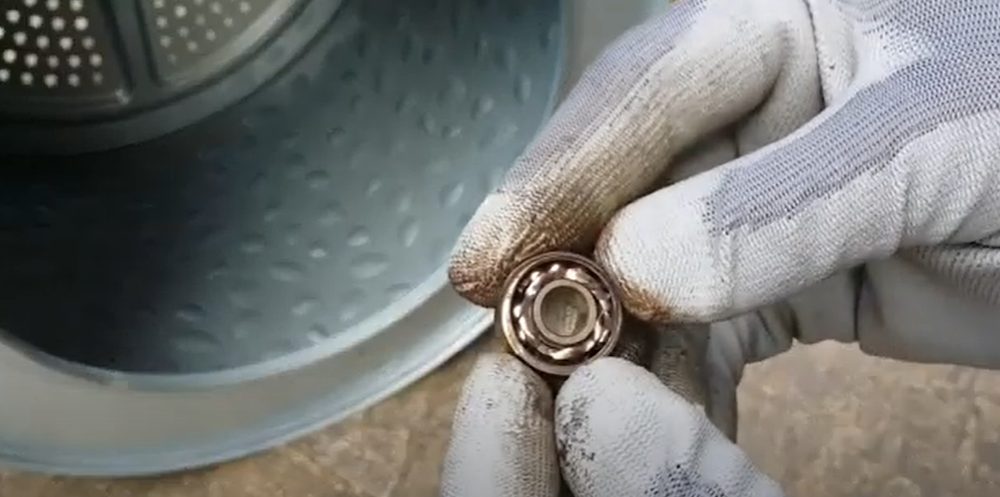
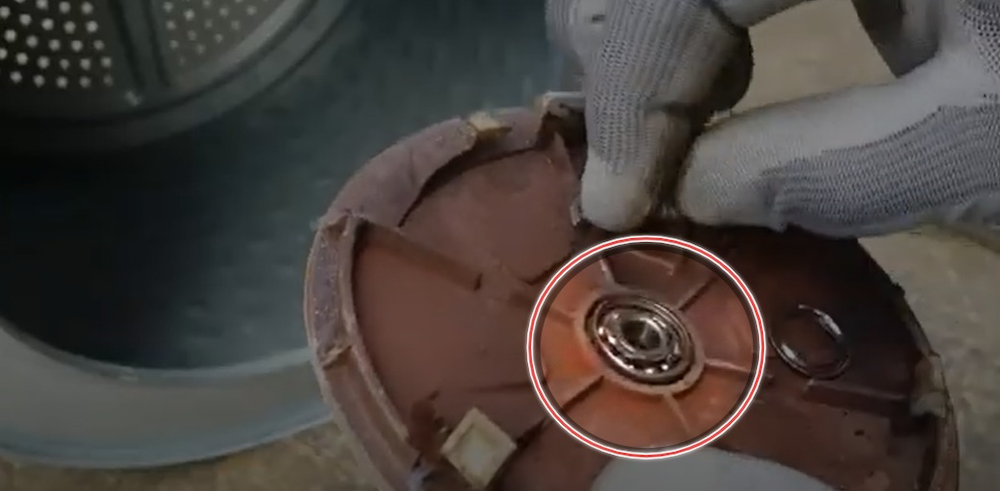
| Part | Drum support bearing |
| Location | It is located at the back of the dryer drum near the center of the drum. |
| Ease of troubleshooting | Easy |
| Cost | $6 – $10 |
| Repairable | No |
Here’s the thing:
Like the drum rollers and glides, the drum support bearings are another dryer component that supports the drum while spinning.
As such, when they wear out or suffer some damage, your dryer will have trouble spinning and likely produce a buzzing noise.
Take it from this Reddit user:
He has a GE DDE7200RALWH dryer that won’t start but makes an electrical buzzing noise instead.
And in my experience repairing appliances, I have encountered a similar case with a GE dryer.
You see:
The solution is to replace the worn drum bearings. Simply detach the rear panel, locate the bearings, inspect them for damage, and replace them if necessary.
Ultimately:
Your dryer will function properly once you’ve replaced these bearings. Note that the GE online parts store is a great source for genuine replacement parts.
6. Faulty Dryer Motor
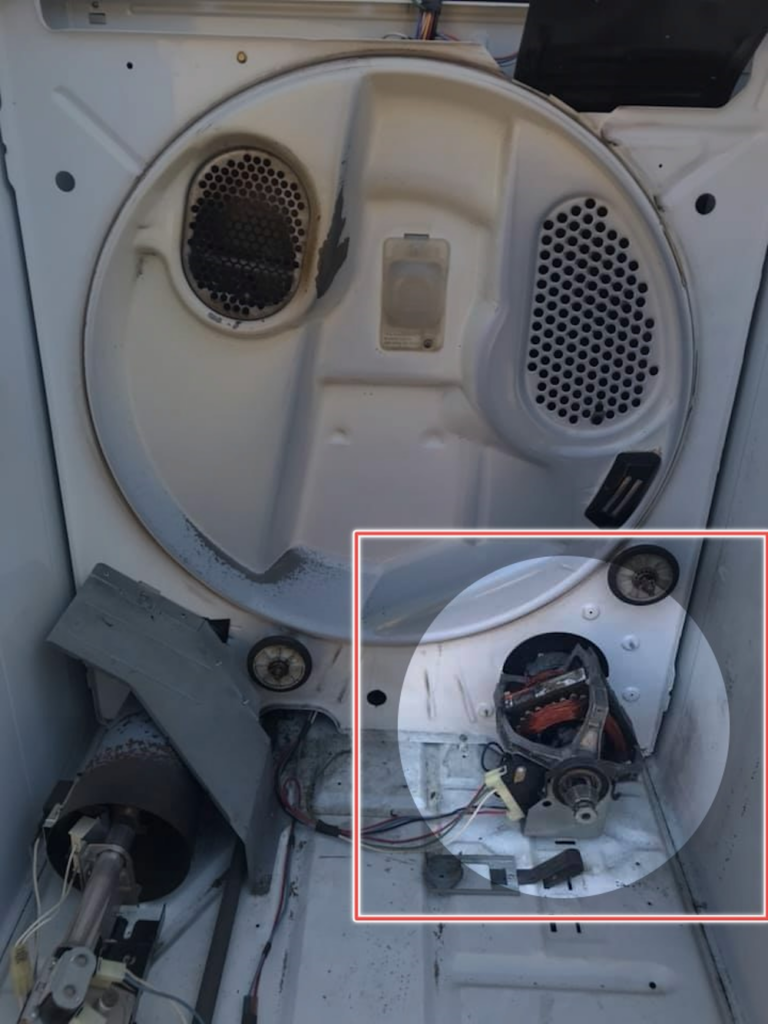
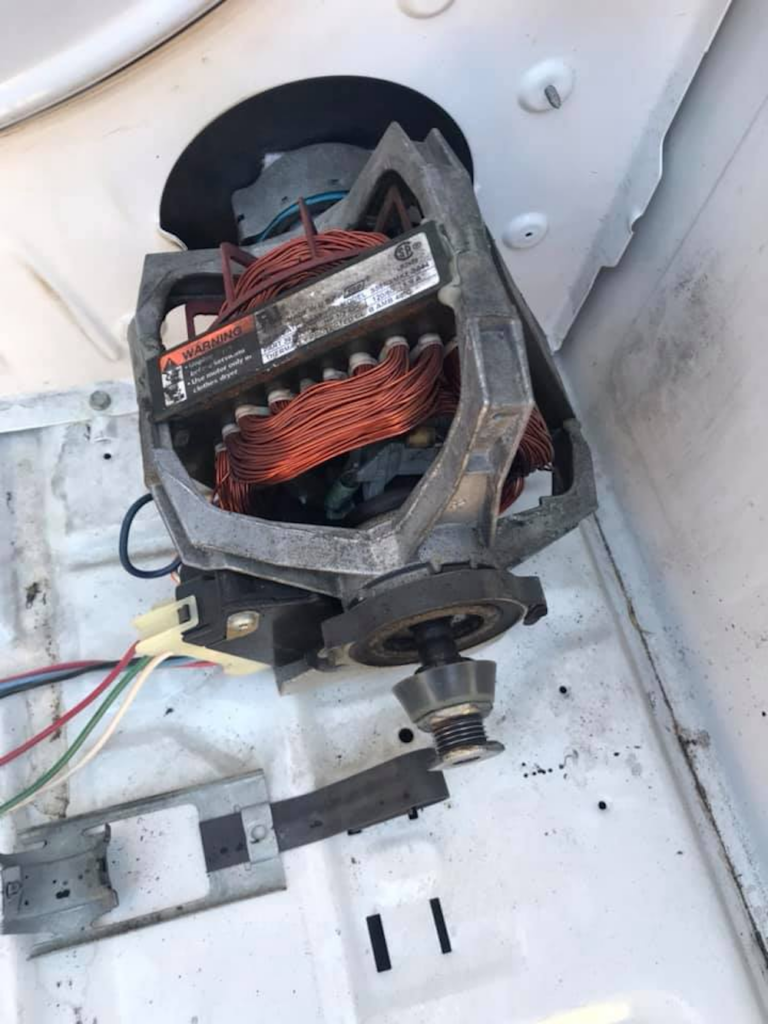
| Part | Dryer motor |
| Location | It is positioned near the bottom of the dryer, near the drive belt and idler pulley. |
| Ease of troubleshooting | Difficult |
| Cost | $65 – $150 |
| Repairable | Yes – If it is a wiring issue. No – If it is damaged |
Hear me out:
Although this is one of the most common causes of this dryer problem, I typically suggest it last because it’s the most technical. You’d want to be certain there isn’t an easier fix before pulling out the big guns.
So:
If you’ve reached this point without finding a solution to your problem, your dryer motor is likely faulty. The motor provides the driving force that powers the rotation of the dryer drum.
Now:
This Reddit user noticed their Kenmore dryer was making a buzzing sound without spinning. And in response, another user correctly suggested the motor could be shorted.
Jake also pointed out that when a dryer keeps shutting off mid-cycle, it is another indicator that the motor is bad.
In any case:
To troubleshoot your dryer motor, detach the front panel, remove the dryer drum, and locate the motor beneath it. Test the motor for electrical continuity with a multimeter and replace it if negative.
Finally:
Replace the motor and ensure the blower wheel can turn without restriction. I recommend employing a professional to help with this task to avoid damage to your dryer.
Conclusion
All in all:
Your dryer won’t spin and will produce a buzzing sound if any of the components supporting or driving the drum are faulty. You’d want to get this fixed as soon as possible.
Luckily:
I have highlighted these troubleshooting tips to get your dryer spinning again:
- Realign or replace the drive belt.
- Replace a damaged idler pulley.
- Replace the worn drum rollers.
- Replace the worn drum glides.
- Replace the worn drum support bearing.
- Replace the defective dryer motor.
Now:
You should be able to resolve this issue on your own. But if you need extra assistance, don’t hesitate to use SimplySwider’s “Ask the Expert” feature for one-on-one guidance with an experienced appliance technician.
Plus:
Jake says, “Regularly servicing and maintaining your dryer keeps you ahead of impending technical difficulties.”
I’ll keep an eye out for your questions and additions in the comment section below.
Frequently Asked Questions
When the motor is bad, people typically notice a humming or buzzing sound from their dryers. Combined with this sound, you may also notice malfunctions in core dryer processes like spinning.
Yes, a faulty or worn motor capacitor could hinder your dryer’s rotation while producing a buzzing sound. As such, you must test and replace the capacitor to solve this problem.
Generally, dryer belts could last for a couple of decades, but replacing your dryer belt every five years will guarantee optimal performance. Moreover, I recommend examining your belt regularly for signs of wear.

